Can ERC-8004 replicate the success of x402 and become the cornerstone of the AI agent trust layer?
Original Author: David, TechFlow by Deep Tide
Original Title: Successor to x402? It's Time to Pay Attention to ERC-8004
x402 has clearly exploded in popularity.
According to CoinmarketCap data, trading volume of various projects in the x402 ecosystem has surged 137 times, and the first ecosystem token PING soared from zero to a market cap of $30 million within a few days.
KOLs from all sides have been publishing intensive analyses, covering everything from technical principles to project overviews—every angle you can think of has been written about.
Yet two weeks ago, when we analyzed x402 early and mentioned the potential of projects like PayAI, the entire market was relatively quiet.
In a market where narratives and token lifecycles are rapidly shortening, researching new narratives in advance makes it easier to lock in opportunities for related assets.
(Related reading: What investment opportunities are hidden in the underestimated x402 protocol, which both Google and Visa are deploying?)
Now, every time you refresh Twitter, a new "x402 ecosystem project" pops up; frankly, if you're just starting to research x402 now, it might already be a bit late.
It's not that the protocol itself lacks prospects, but rather that the most obvious Alpha opportunities have already been fully mined.
But while everyone is focused on x402, attentive observers will notice that another protocol has recently been appearing frequently in discussions in the English-speaking crypto community:
ERC-8004.
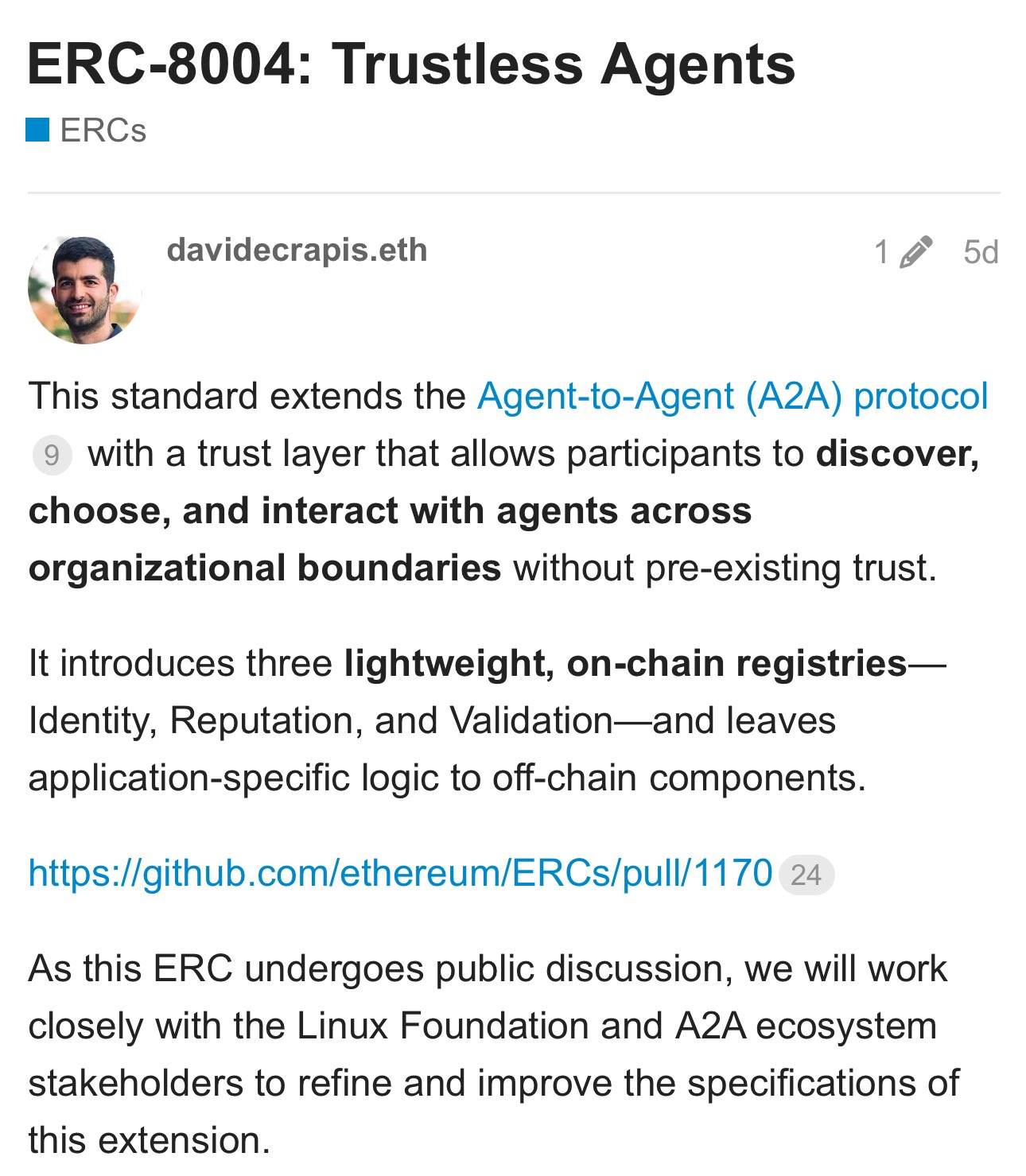
Even more interestingly, one of the proposers of ERC-8004, Davide Crapis, head of the dAI team at the Ethereum Foundation, revealed a detail in a September interview with Decrypt:
"ERC-8004 will support multiple payment methods, but having x402 extensions helps the developer experience."
Wait, support multiple payment methods? Isn't x402 a payment protocol? Why is ERC-8004 also involved in payments—are they competitors or complementary?
In early October, when the Ethereum Foundation announced the final version of ERC-8004, the signatories included Marco De Rossi from MetaMask, Jordan Ellis from Google, and Erik Reppel from Coinbase, who is also the creator of x402.
The same person is driving both protocols. What's the logic behind this?
If the explosion of x402 made everyone see the huge market for AI Agent payments, then ERC-8004 may represent the other half of the puzzle in this market that has yet to be fully recognized.
When everyone is chasing the payments track, perhaps the real opportunity lies outside of payments.
ERC-8004: The Prerequisite for Payments Is Identity Registration for AI
To understand ERC-8004, we need to return to a fundamental issue of the AI Agent economy.
Imagine a scenario of collaborative AI:
Your personal AI assistant needs to complete a complex task—preparing a market analysis report for your upcoming product launch event.
This task is beyond its capabilities, so it needs to hire other specialized AIs: one for data scraping, one for competitor analysis, and one for chart creation.
With x402, payments are no longer an issue; a few lines of code can complete a USDC transfer. But before making payments, your AI assistant faces a series of tricky identity problems:
Among these self-proclaimed "professional data analysis AIs," which ones are real and which are scammers? What is their past work quality? How many clients have given positive reviews, and how many have complained?
This is a bit like doing business in a world without Taobao, Dianping, or business registration. Every transaction is a blind box, every collaboration a gamble.
Therefore, if we have to explain it in one sentence, ERC-8004 is the "business registration bureau + credit system + qualification certification center" for AI Agents on-chain.
It gives every AI Agent an ID card, credit record, and competency certification, all recorded on the blockchain—publicly queryable and tamper-proof.
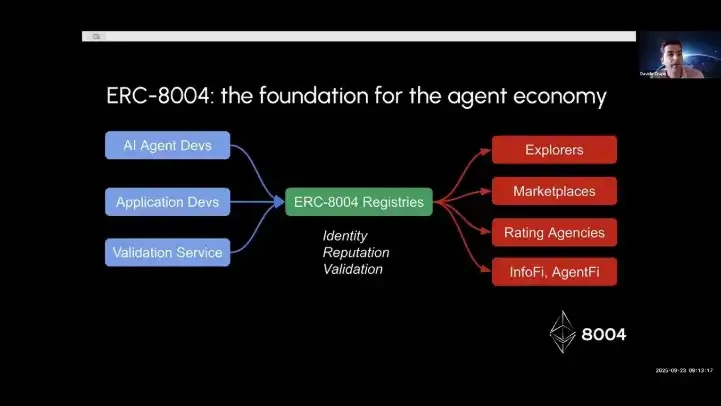
On August 13 this year, Davide Crapis from the Ethereum Foundation, Marco De Rossi from MetaMask, and an independent AI developer Jordan Ellis jointly submitted the EIP-8004 proposal.
Interestingly, this Jordan Ellis was later confirmed to be closely associated with Google’s Agent-to-Agent team.

Simply put, ERC-8004 adds a trust layer to Google’s A2A. In the words of the Ethereum Foundation, this is about building a "trusted neutral rail" for AI Agents.
Leaving aside the complex code details, let's briefly look at how 8004 works.
The design of ERC-8004 is extremely streamlined, containing only three on-chain registries:
-
Identity Registry: Each AI Agent receives an ERC-721 token as an ID card. Yes, you read that right—AI Agents are NFT-ized. This means the Agent’s identity can be viewed, transferred, or even traded in any wallet that supports NFTs.
This NFT points to a standardized "Agent Card," describing the Agent’s name, skills, endpoints, and metadata. Because it follows open standards, any browser or marketplace can index it, enabling cross-platform permissionless discovery.
-
Reputation Registry: This is the "Dianping" of the AI Agent world. Clients and other Agents can submit structured feedback, tagging by skill or task. More importantly, x402 payment proof can be attached. Only clients who have actually paid can leave reviews, preventing fake ratings.
All reputation signals are public goods. This means anyone can build their own reputation scoring system based on this data.
-
Validation Registry: For high-value tasks, reviews alone are not enough. The validation registry allows Agents to request third-party validation—it could be a TEE (Trusted Execution Environment) oracle, staking-backed inference, or zkML verification.

This is the qualification certification in the Agent world. An Agent claiming to do financial analysis can cryptographically prove it actually ran a specific model and produced specific results.
If this sounds a bit technical, let’s look at a concrete example.
Suppose an exchange’s AI Agent needs a weekly DeFi market analysis report, but it doesn’t have this capability itself.
-
Service Search: The client Agent finds analyst Agent Alice through the identity registry and checks her service description on the NFT identity card.
-
Check Reputation: Finds that Alice has 156 positive reviews, an 89% completion rate, and real reviews with x402 payment proof.
-
Escrow Payment: Pays 100 USDC via x402 to a smart contract escrow, not directly to Alice.
-
Third-party Validation: After Alice completes the report, validator Bob checks the quality and signs confirmation in the validation registry.
-
Automatic Settlement: The contract sees the validation is passed, automatically releases funds to Alice, and the client leaves a review.
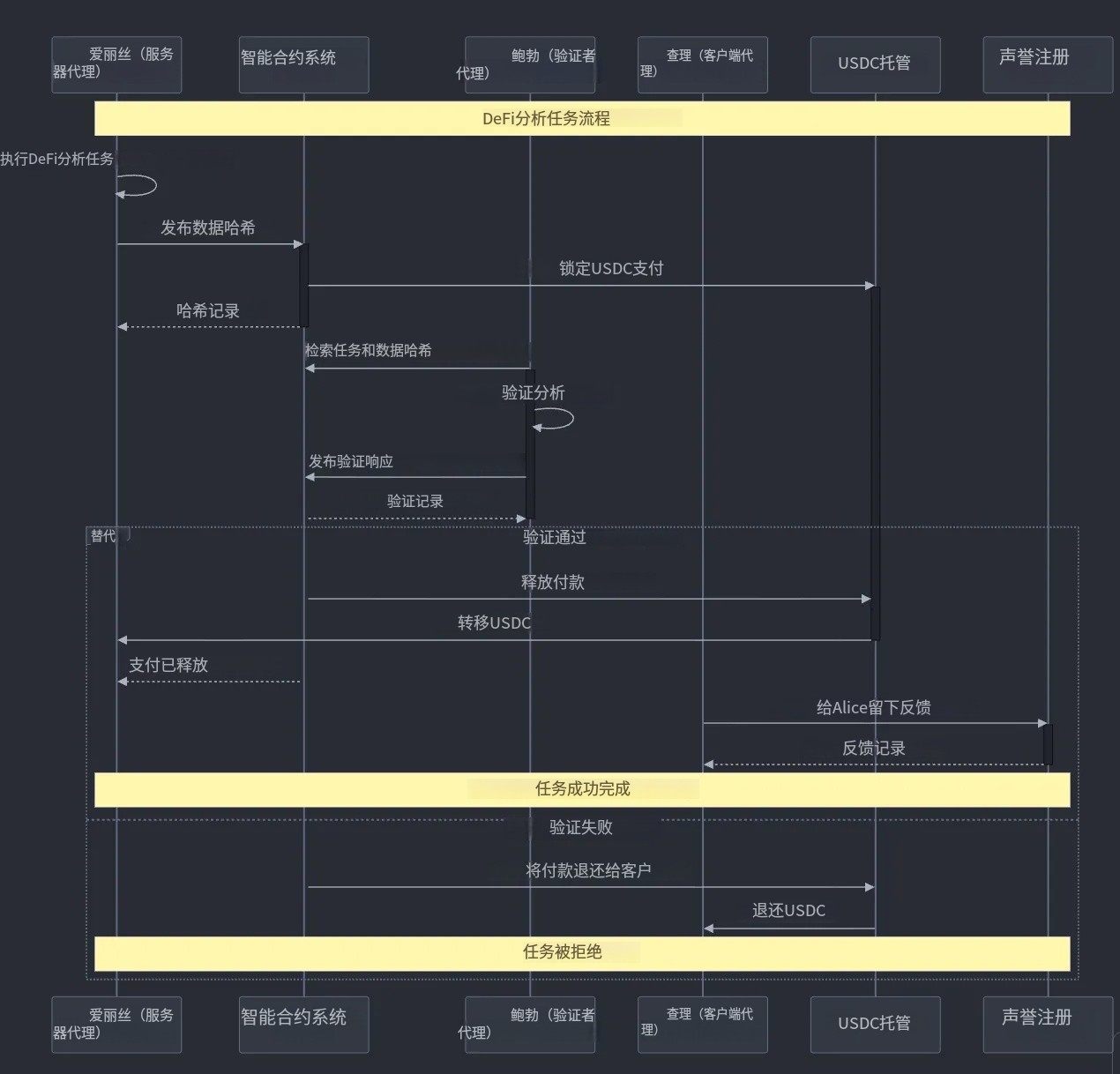
(Source: Researcher Yehia Tarek’s personal column)
The entire process requires no human intervention; three AI Agents autonomously complete a business transaction based on the ERC-8004 trust system.
Wait, does this have anything to do with x402?
To put it simply, the relationship between x402 and ERC-8004 is:
x402 solves the payment problem for AI Agents, ERC-8004 solves the trust problem, and a truly autonomous AI economy requires both.
Specifically, x402 is the standard for micropayments between agents or users, eliminating payment friction and allowing one agent to automatically pay another for task completion.
ERC-8004 is the identity and reputation layer for agents. It introduces on-chain verification, making every task and score traceable.
An easier analogy is:
-
x402 = ERC20
-
ERC 8004 = Etherscan
The former allows you to pay API access fees directly by call count, acting as a payment standard; the latter is more like an on-chain AI agent registry, with each agent having an associated wallet that is queryable and verifiable.
In fact, all of this is part of a larger "crypto x AI" narrative. In a broad crypto AI economy:
-
Crypto AI Economy = Discovering AI Agents + Communication Between AI Agents + Verifiable Computation
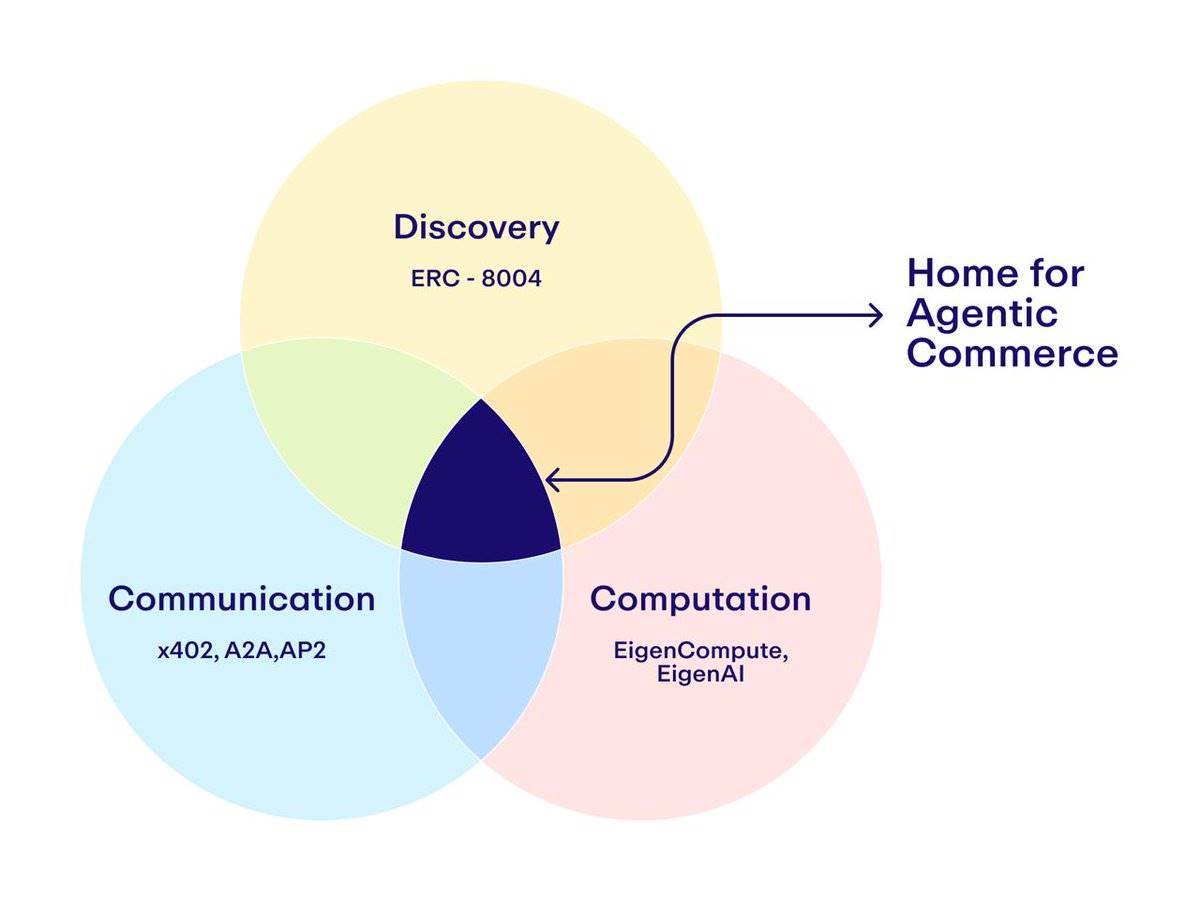
(Image source: Twitter user @soubhik_deb)
How do you discover AI Agents? Essentially, it's about enabling AI Agents to find each other—this is what ERC-8004 does, writing a registry on Ethereum to record the identities of AIs.
How do you enable communication between AI Agents? x402 is an open standard for on-chain payments between agents; there’s also Google’s A2A protocol, etc.
How do you verify all this? Every AI Agent must perform verifiable inference, reasoning, and actions, which may be recorded in places that emphasize data availability.
This post by @soubhik_deb on Twitter is worth reading, as it explains the above logic clearly and can help you discover more Alpha project opportunities based on this logic.
At this point, we fully understand the relationship between x402 and ERC-8004; describing their relationship as complementary and jointly building the full picture of the AI economy is more appropriate.
If you want a clearer and more direct comparison, here’s a one-picture summary:
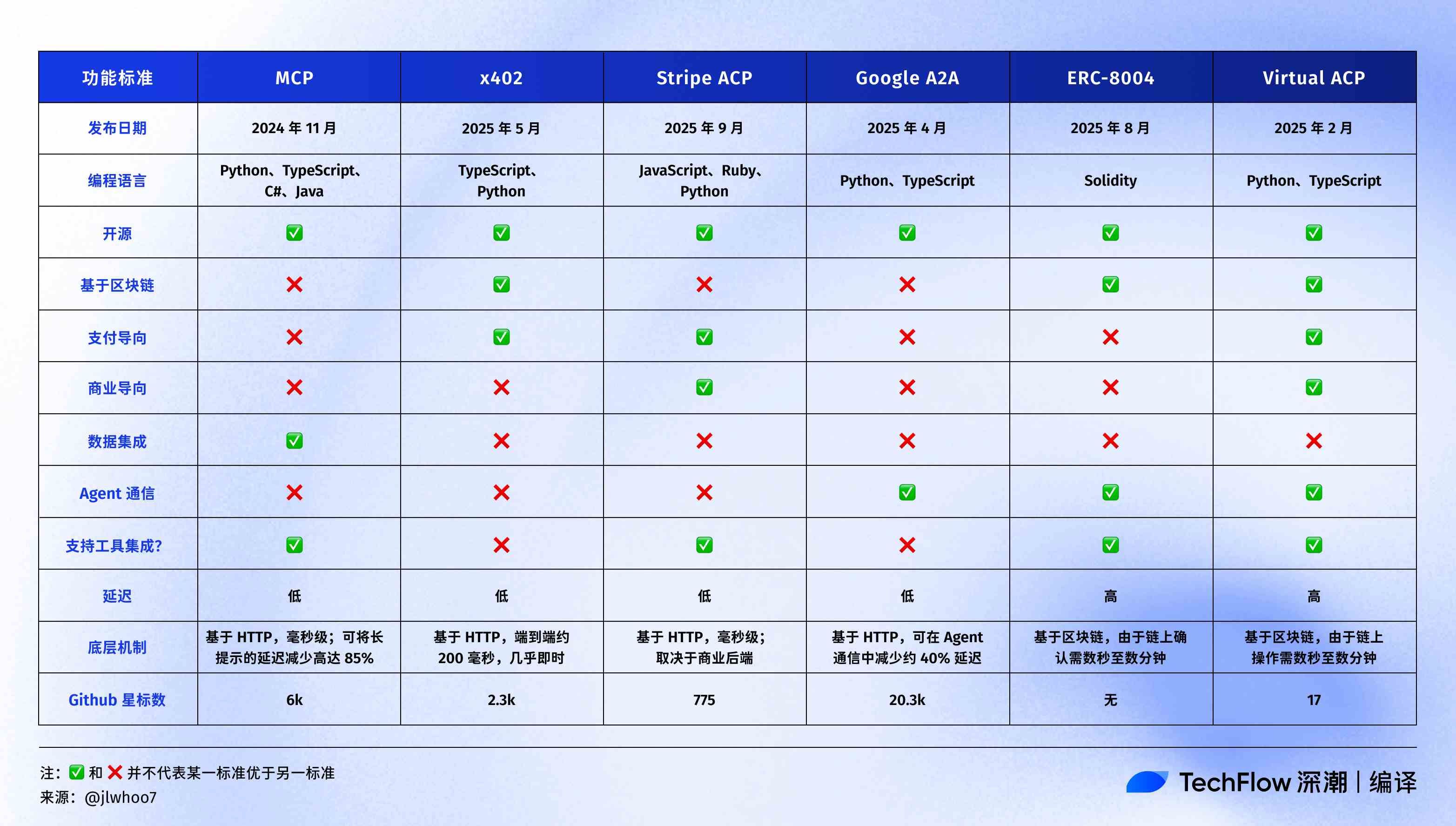
Beneficiary Projects Under the ERC-8004 Narrative
If you want the TL;DR version, just refer to the image below.
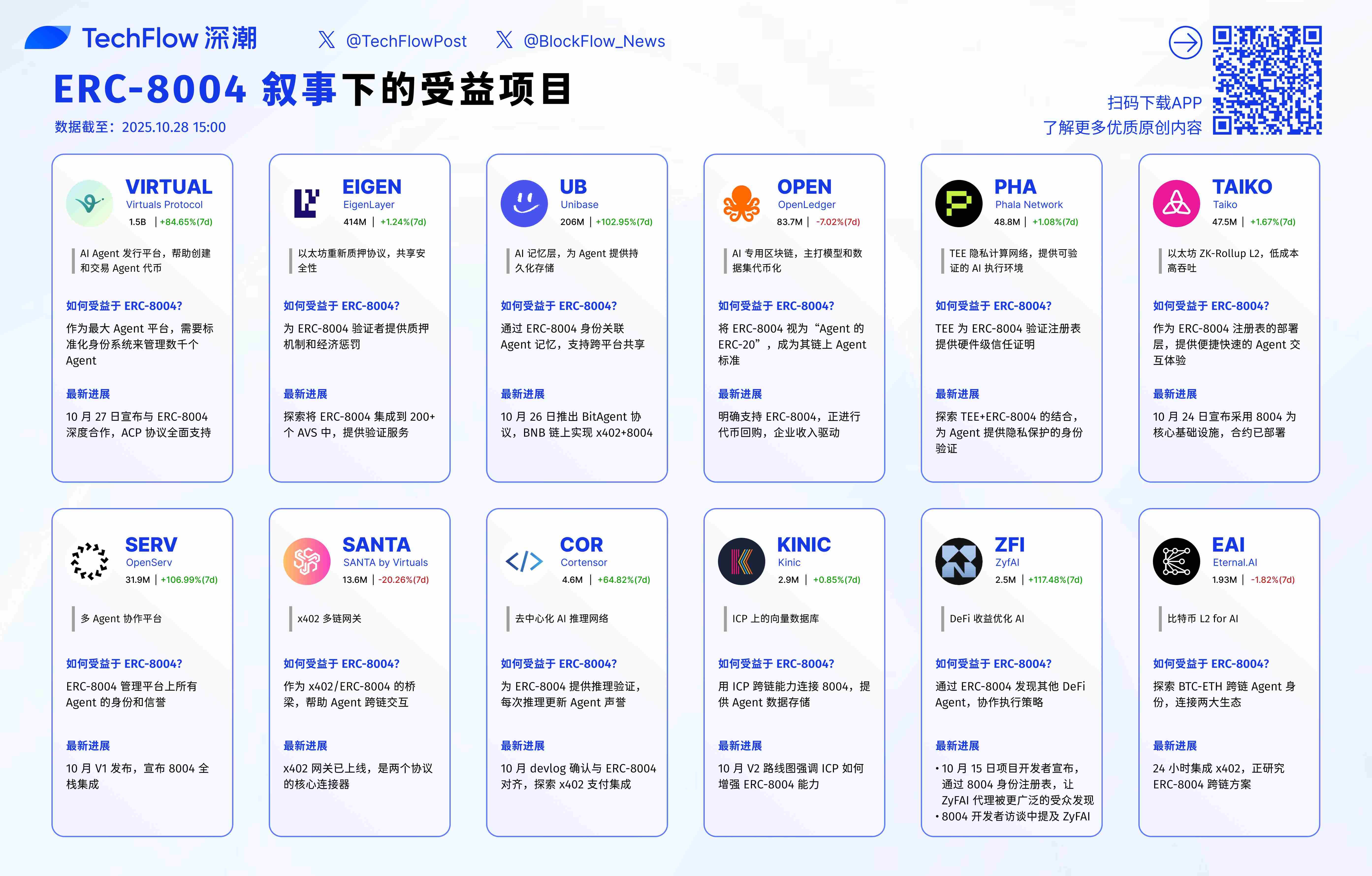
When x402 exploded, the first to rise were payment tokens like PING. But ERC-8004’s opportunities are more widely distributed, from infrastructure to applications—each layer has its own logic. Understanding this logic is more important than chasing a single project.
1. First is the infrastructure layer, such as Taiko and EigenLayer.
Taiko, L2 Execution Layer
Why would an L2 be the most active supporter? The narrative here is that the Agent economy needs cheap and fast chains. Mainnet is too expensive; every identity or reputation update costs several dollars in gas fees, which Agents can't afford. Taiko provides a solution by deploying the 8004 registry on L2, reducing costs. The contract was deployed on October 24 and may become the main battleground for Agent activity.
EigenLayer, Security Layer
The biggest challenge for 8004 is: what if validators act maliciously? EigenLayer’s answer: slashing. Validators stake ETH, and if they provide false validation, their assets are confiscated. EigenLayer is integrating 8004 into over 200 AVSs, each of which could become a dedicated Agent validation service.
The logic of infrastructure is simple: the more Agents, the more transactions, the more revenue. This is the business of selling shovels.
2. Next is the middleware layer, such as S.A.N.T.A and Unibase.
S.A.N.T.A, Payment Bridge
Its positioning straddles both narratives, acting as a connector between x402 and 8004. When one Agent finds another through 8004 and needs to pay via x402, S.A.N.T.A handles the process. More importantly, it enables cross-chain operations—for example, in the ideal narrative, if a Solana Agent wants to hire an Ethereum Agent, S.A.N.T.A can play a role.
Unibase, Memory Layer
Agents need not only identity but also memory. Unibase gives each Agent persistent storage, linked through the 8004 identity system. This means Agents can "remember" previous interactions, accumulate experience, and even share knowledge. On October 26, it achieved x402+8004 integration on the BNB Chain, taking the lead.
The value of middleware lies in its irreplaceability. You can switch to another L2, but some connection functions are unique.
3. Finally, the application layer, such as the old friend Virtuals Protocol.
Virtuals is an AI Agent token issuance platform, allowing users to create, invest in, and trade AI Agent tokens through a bonding curve mechanism.
Currently, there are over 1,000 Agent projects on the platform, with daily trading volume exceeding $20 million.
For Virtuals, 8004 solves a real problem: how to enable different Agents to recognize and interact with each other. Recently, its official Twitter announced that the ACP protocol update will fully support the 8004 standard, meaning every Agent issued on Virtuals will automatically have an on-chain identity and reputation system.
As for which application will break out, perhaps it can be combined with Launchpad gameplay, and further observation is needed regarding updates in rule design and incentives.
Overall, x402 solves the payment problem, ERC-8004 solves the trust problem. x402 took five months from launch to explosion; 8004 may be even faster.
In terms of timing, pay attention to Devconnect on November 21, which will feature a Trustless Agents Day showcase. The first batch of applications based on 8004 may demonstrate their features at the conference. If a killer app appears, it could trigger the first wave of hype.
By the end of this year, I predict that x402 ecosystem projects will enter a consolidation period and are likely to announce support for 8004. The synergy between the two protocols will create a 1+1>2 effect.
If you are a conservative player, you might focus on large-cap infrastructure projects benefiting from 8004; if you are more aggressive, you need to closely monitor the small-cap projects in the table above and watch for new projects emerging.
After all, the crypto market has not been dominated by a technology-driven narrative for a long time. Whether x402 and ERC-8004 are just a flash in the pan or have far-reaching impact will be tested by the market.
Disclaimer: The content of this article solely reflects the author's opinion and does not represent the platform in any capacity. This article is not intended to serve as a reference for making investment decisions.
You may also like
7 Major Crypto Trends and Lessons You Must Know in 2026
The dawn of regulatory reform is coming—can Bitcoin make a comeback?
Crypto Market Frenzy: How Will Regulation Impact the Future?
Ethereum supply plummets, how will the market react?
